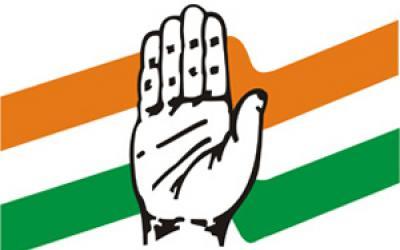
One of the main questions that has been asked in the current controversy surrounding the issue of land acquisition is—why does the government need to buy land? Jairam Ramesh and Muhammad Ali Khan try and answer this question in their new book Legislating for Justice—The Making of the 2013 Land Acquisition Law.
As they write: “Acquisition of property is founded upon the universally recognized principle of ‘Eminent Domain’.” And what is Eminent Domain? “[It] is the power of the Government…to take over resources for the greater national good. At its most basic Eminent Domain refers to the inherent authority of the Government to acquire private property on the payment of fair compensation for a use that benefits public at large,” explain the authors.
Further, a lot of public infrastructure gets built because of Eminent Domain. As Ramesh and Khan write: “Without the power of Eminent Domain, the Government could not establish the infrastructure that we rely on—roads, hospitals, airports, public schools, common facilities such as warehouses for farmers, playgrounds for children all are made possible through the use of Eminent Domain.”
So far so good. But why does the government have to acquire land for private companies? Before I get to answering this question, it is important to realize that the land acquisitions carried out by the government in India can essentially be divided into two eras—those carried out before 1991, the year of the economic reforms, and those carried out after.
As Michael Levien of the Johns Hopkins University writes in a recent research paper titled From Primitive Accumulation to Regimes of Dispossession: Six Theses on India’s Land Question: “Since 1991, India has passed from a regime that dispossessed land for state-led industrial and infrastructural expansion to one that dispossesses land for private—and increasingly financial—capital. Between 1947 and 1991, the Indian state largely dispossessed land for public-sector projects to expand the industrial and agricultural productivity of the country. The main forms of this dispossession were public sector dams, steel towns, industrial areas, and mining.”
But that changed after the economic reforms of 1991, when the private sector began to play a more active and larger role in the Indian economy. The economic reforms unleashed the Indian IT and BPO industry. These sectors had an unending appetite for land and the government helped them by acquiring land for them.
Gradually, public-private partnerships became the preferred method for building physical infrastructure. And this led to the government acquiring more land for private firms. In fact, as Levien points out: “Crucially, compensating private infrastructure investors with excess land and/or development rights became an increasingly popular method of cost recovery in these arrangements—whether for roads, airports, or affordable housing (Ahluwalia 1998; IDFC 2008, 2009). Infrastructure investment thus became a vehicle for private real estate accumulation, culminating with Special Economic Zones in the mid-2000s.”
Hence, land became a sort of a currency for the government. Also, given that the government could acquire land for private firms, it is obvious that a lot of politicians must have made a lot of money as well.
Nevertheless, the question is how did the government get around to acquiring land for the private sector? Before the 2013 land acquisition law was passed, land acquisition in India was governed by the Land Acquisition Act 1894—a law from the time when the British ruled India.
In fact, an amendment made in 1984 to the 1894 Act expanded the government’s ability to “acquire lands for a public purpose ‘or for a private company’”. This amendment allowed the government to acquire land for private companies. And it is worth reminding the readers, those were the days when the Congress party ruled the country.
It was this amendment which was abused by the various state governments around the country to acquire land for private companies. This amendment allowed the government to acquire land from farmers at cheap rates and then sell it on to private companies at a significantly higher price.
The ‘Yamuna Expressway’ is a very good example of this, where the land was acquired by the Uttar Pradesh from farmers and then sold on to private parties at multiple times the price the farmers had been paid for it.
As Ramesh and Khan point out: “In 2009, the Uttar Pradesh Government had indeed acquired land as part of a concession agreement and then resold it to Jaypee associates group as part of a bundling project for the construction of the Yamuna Expressway. There was no legal bar on doing so under the old law [i.e. the 1894 Act].” Further, the purpose for which the land was acquired could be changed as well.
The corporates preferred the government acquiring land for them and then selling it to them at a higher price because of several reasons. Land records in India are poorly maintained and purchase of land can easily be challenged in court at a later date.
As Nitin Desai writes in a recent column in Business Standard: “Many companies want the government to acquire land for them…as to have the assurance that their right of ownership cannot be challenged by some new claimant.”
Further, as Ramesh and Khan point out: “After the initial round of consultations in July-August 2011, it was also acknowledged that land values are, on an average, a sixth of their represented or book value as drawn out in the circle rate. As one moved away from urban centres the disparity became more striking with land records not having been updated for decades in some parts of the country.”
As per the 1894 Land Acquisition Act the government had to compensate the owner of the land at market value. But given that the government land records were infrequently updated, the government on many occasions got away with paying a pittance in comparison to the ‘real’ market value.
Even if the government were to then sell on the land to a corporate firm at a higher price, the firm would still get a good deal because of the huge differential between the price as per the government land record and the real market price.
Another reason corporates liked to outsource the land acquisition process to the government lay in the fact that the 1894 Act had an ‘urgency’ clause. As Ramesh and Khan write: “Section 17 of the Land Acquisition Act, 1894 was used to forcibly disposes people of their land in a frequent and brutal fashion by suspending the requirement for due process…Section 5A…allowed for a hearing of objections to be made but put no responsibility on the Collector to take those claims into consideration.”
So people could complain, but it was up to the Collector whether he wanted to listen to them or not. Further, the definition of urgency was also left “to the authority carrying out the acquisition.” This clause allowed the collector to “take possession of the land within fifteen days of giving notice”. He could take possession of a building within 48 hours of giving notice. No private company could hope to acquire land at such a quick pace.
The irony is that the 1894 Land Acquisition Act was allowed to run for almost 66 years after independence. The Congress party ruled the country in each of the decade after independence and chose to do nothing about it. Under the 1894 Act the government could acquire land in a jiffy, without adequately compensating the land-holder. When the Act was finally replaced, what came in its place has made it next to impossible to acquire land.
In fact, Ramesh and Khan,rather ironically admit to that in their book, when they write: “The law was drafted with the intention to discourage land acquisition. It was drafted so that land acquisition would become a route of last resort.”
To conclude, as far as the land acquisition process is concerned, it is safe to say that we have jumped from the frying pan into fire.
(Vivek Kaul is the author of the Easy Money trilogy. He tweets @kaul_vivek)
The column originally appeared on Firstpost on May 28,2015


